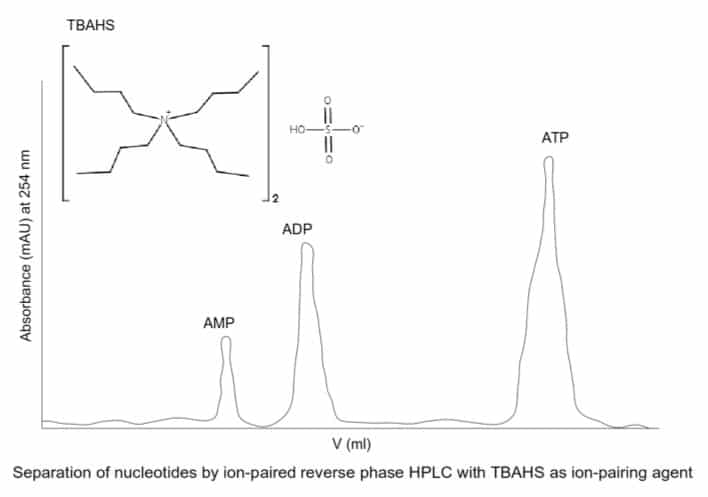Do you use pre-packed Superdex 75 or Superdex 200 columns for gel filtration chromatography? Ever wonder if other media could better address your purification needs? Look no further. Your quest ends here!
But if you’re looking for information on gel filtration principles, check out this earlier article.
Choosing a Column for your Gel Filtration Experiment
All gel filtration chromatography columns separate components based on size. However, there are several factors you need to consider before choosing the column that’s right for you.
Size of the Analyte
First, keep its size in mind when choosing a column for purifying your analyte. Gel filtration matrices are not uniform; their pore sizes are variable, falling within a range. For example, Figure 1 shows a scanning electron micrograph of a 2% agarose gel.

Choose a medium with the correct range of pore sizes (or the correct fractionation range) to adequately separate the molecule of interest from the contaminants in your sample.
For proteins, you may have prior molecular weight information from SDS-PAGE. However, for an oligomeric protein, the size information you have from SDS-PAGE may not represent its true size in solution. If you do not know the molecular weight of your analyte, start with a column with a broad fractionation range. Then, switch to a column with a narrower fractionation range to improve the quality of separation.
Sample Purity
Okay, so you chose your column based on the size of your analyte. What about the contaminants in your sample? Yes, you need to consider their sizes and relative amounts as well before picking your column. Ideally, choose a column that gives the best possible resolution. In case there is more than one option available, choose a column where the component of interest elutes earlier.
Sample Volume
Whether you choose a preparative grade or an analytical grade column depends on your sample volume and the purpose of your experiment. The larger volume preparative columns differ from analytical ones in terms of loading capacity and resolving power. Use preparative columns for fractionating large volumes of sample and analytical columns for fractionating small volumes or analyzing the composition of your samples. Keep your sample volume between 0.5–4% of the column volume because with increasing sample volume its spread over the column increases, which could adversely affect the resolution of peaks in your chromatogram.
Bead Size
We know that the distribution of pore sizes in the column matrix determines the fractionation range of the column. But, what about bead size? Yes, it turns out that bead size can affect the width of the eluting peaks and, therefore, resolution of the sample components.
How so? You may ask.
Beads that are smaller have larger surface area to volume ratios, which increases the contact area between the beads and the sample helping improve resolution. However, smaller beads increase column back pressure requiring you to reduce the flow rate, which extends your run time; this is why smaller beads are used more often in analytical columns.
Experimental Objectives
Finally, is desalting or buffer exchange the objective of your experiment? Or is it separating out the individual components of your sample?
If it were the former, then a PD-10 column, or a column with resins, such as Sephadex G-10, G-25, Bio-Gel P-2, or Bio-Gel P6DG would suffice. In this case, all the macromolecules in your sample would elute as one group at the column’s void volume. The salt or small molecule contaminant that you were seeking to remove would elute very close to the column’s total volume.
On the other hand, if your objective is to separate out the individual components in your sample, choose a column based on the principles we discussed above.
Column Efficiency
Another parameter you may want to note is column efficiency or the number of theoretical plates in the column, which reflects a column’s ability to produce narrow, well-resolved peaks; higher values mean better resolution. The concept of theoretical plates is widely used to determine the efficiency of separation processes, such as distillation. Imagine each theoretical plate as a segment of the column where equilibrium is established between the stationary and mobile phases. As you increase the number of equilibrium stages (theoretical plates) along the column, the separation of sample components and column efficiency improve. You can do this by increasing the contact area between the stationary and mobile phases. This is why decreasing bead size improves component separation and, in turn, column efficiency. Moreover, a column with a narrower distribution of bead sizes is more efficient than one with a broad range.
But, if you think that a longer column should have a greater number of theoretical plates, think again. This need not be the case. Yes, longer columns may improve the separation of your sample components but their efficiency may be lower because of sample diffusion over their length, which could result in peak broadening.
Pre-packed Columns for Gel Filtration Chromatography
The table below lists a few popular gel filtration chromatography pre-packed columns and column characteristics that you must consider before picking one. Do bear in mind that the fractionation range of each column is based on data using globular proteins. If you use linear or branched chain polymers instead, this range is different.
Column | Bead Chemistry | Mean bead size (µm) | Column volume (mL) | Efficiency (m-1) | Fractionation range (kDa) (Mean pore size [nm]) |
Superdex 75 10/300 GL | Composite of cross-linked dextran and agarose | 13 | 24 | > 25000 | 3-70 (6) |
Superdex 75 16/60 pg | Composite of cross-linked dextran and agarose | 34 | 120 | > 13000 | 3-70 (NA) |
Superdex 200 10/300 GL | Composite of cross-linked dextran and agarose | 13 | 24 | > 25000 | 10-600 (13) |
Superdex 200 16/600 pg | Composite of cross-linked dextran and agarose | 34 | 120 | > 13000 | 10-600 (NA) |
Superose 12 10/300 GL | Cross-linked agarose | 10 | 24 | > 40000 | 1-300 (13) |
Superose 6 10/300 GL | Cross-linked agarose | 13 | 24 | > 30000 | 5-5000 (25) |
HiPrep 16/60 Sephacryl S-100 HR | Cross-linked copolymer of allyl dextran and N, N’-methylenebisacrylamide | 50 | 120 | > 5000 | 1-100 (NA) |
HiPrep 16/60 Sephacryl S-400 HR | Cross-linked copolymer of allyl dextran and N, N’-methylenebisacrylamide | 50 | 120 | > 5000 | 20-8000 (NA) |
PD-10 desalting column | Sephadex G-25 (dextran cross-linked with epichlorohydrin) | 50-150 (dry) | 8.3 | – | 1-5 (NA) |
ENrich SEC 70 | Hydrophilic polymethacrylate | 10 | 24 | >20000 | 0.5-70 (NA) |
ENrich SEC 650 | Hydrophilic polymethacrylate | 10 | 24 | >20000 | 5-650 (NA) |
TSKgel-G2000SW (30cm) | Silica with hydrophilic diol functional groups bonded to silica surface | 10, 13 | 13.25, 108.9 | 10000 | 5-150 (12.5) |
TSKgel G3000SW (30cm) | Silica with hydrophilic diol functional groups bonded to silica surface | 10 | 13.25 | 10000 | 10-500 (25) |
TSKgel G4000SW (30cm) | Silica with hydrophilic diol functional groups bonded to silica surface | 13, 17 | 13.25, 108.9 | 8000 | 20-7000 (45) |
Zorbax GF-250 | Zirconium stabilized silica functionalized with diol groups | 4 | 4.15, 17.35, 88.25 | >18000 | 4-400 (15) |
Zorbax GF-450 | Zirconium stabilized silica functionalized with diol groups | 6 | 17.35, 88.25 | > 10000 | 25-900 (30) |
Hope you found the above information useful. You are welcome to post questions on this subject or share insights you gained during the course of your experiments. Also remember to check in on my next article about estimating molecular weight using chromatography.
Further Reading
- Size Exclusion Chromatography. Principles and Methods. GE Healthcare Life Sciences’ Handbook.
- Hagel L (2001). Gel-Filtration Chromatography. In: Current Protocols in Molecular Biology. 44: IV: 10.9: 10.9.1–10.9.2. John Wiley and Sons, Inc. DOI: 10.1002/0471142727.mb1009s44.
- Irvine GB (2001). Determination of Molecular Size by Size-Exclusion Chromatography (Gel Filtration). Current Protocols in Cell Biology. 6: 5.5: 5.5.1–5.5.16. John Wiley and Sons, Inc. DOI: 10.1002/0471143030.cb0505s06.







